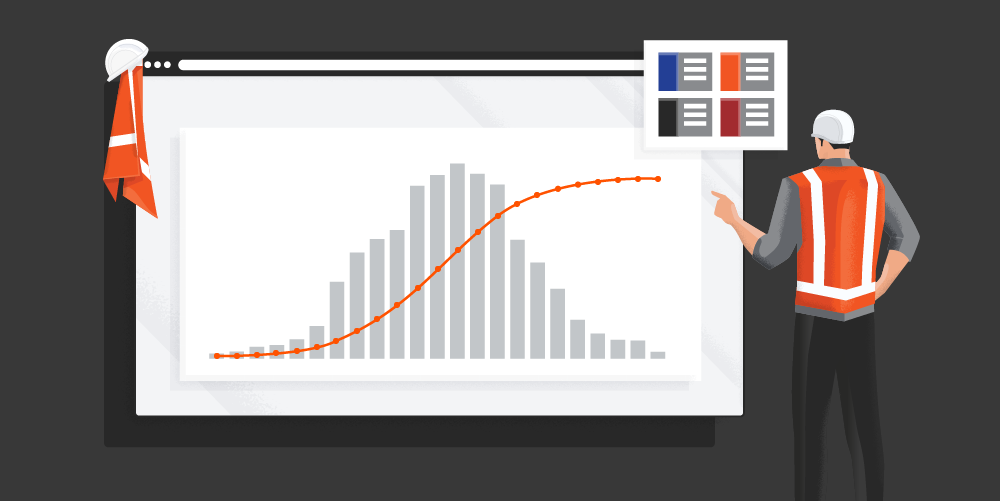— 7 min read
How to Evaluate Financing Options for Contractors
Last Updated Feb 21, 2024

Debt isn’t a bad thing when it is used strategically to grow your business. The smartest way to approach business debt is to know what you will need the money for, what it will allow you to do in terms of growth, what type of construction financing you will need, and how you will account for the cost of financing.
That last part can be tricky. Unfortunately, it is the step many business owners omit from their planning. In this article, we share a step-by-step approach to calculating the cost of financing — and deciding whether your construction business actually needs it.
Contents
Table of contents
1. Determine what you need the money for
Contractors borrow money for a variety of reasons — surviving a recession economy, capitalizing on a construction boom, growing their business, or purchasing new equipment. Those are just a few examples.
If you need to take advantage of a supplier’s discount, you only need a short-term loan or materials financing. If you want to launch a new service line, you may need more flexibility in the amount of funds you borrow. If you are surviving a recession, you will want to look for a flexible loan amount and payback schedule, as well as looking at what financial assistance from the government may be available.
Loan products available to contractors are often designed for specific purposes. Some companies, like Mobilization Funding, provide short-term funding for contractors to cover mobilization costs on a new contract — it may not be the right fit if you’re trying to restructure debt or launch a marketing campaign.
The smartest path forward is to create a business plan for the proposed debt before selecting a financing option. Knowing why you need the money — what you will use it for and, equally important, what specific business goal it will help you meet — can help you determine which financial product is right for your business.
2. Decide what type of financing you need — and when
Figure out exactly how much you need to accomplish the goal you identified in your business plan. To do this, work with your accountant or your accounting software to lay out a company cash flow forecast. If you're seeking financing for a specific project, perform this same exercise on a project level using a spreadsheet or cash flow calculator.
Once you know what you need to achieve your desired outcome, the next big question is WHEN. This is one reason why proper accounting and cash flow management practices are critical — they allow you to see in advance how your plans for growth will impact your company’s available working capital.
For example, if the loan is going to be used for growth, you should be able to plan for that moment well in advance. If you want to purchase new equipment for your company, you can look at your company’s financial data, as well as the current market on equipment, and decide if now is the best time to buy. When you need the money informs which financial product you choose as much as what it is for and how much you need.
If you need the money right now, you may be enticed by some of the unsavory lenders out there promising quick cash immediately. Don’t be fooled. Many of these so-called loans aren’t loans at all, and they can end up costing you way more than you initially planned.
Often, urgent cash requirements can be a sign of a deeper issue, and taking on financing can sometimes make that issue worse. Slow payments are perhaps the biggest source of cash flow problems in construction. If you are seeking outside funding because you have too many delinquent accounts, your first step should be shoring up your financial position at home. Take steps to improve your collection practices and get paid faster. Seeking a loan to cover a shortfall caused by slow-paying customers is like putting a band-aid on a geyser.
3. Calculate the costs
Figuring out how much your loan is going to cost can be challenging, but it is a critical step. Whether your loan is long-term or short-term, a line of credit, an SBA loan, or (please no) a Merchant Cash Advance, here are a few factors to consider when determining the cost of your loan.
- Fees: This includes closing costs, administrative fees, and any additional money you have to pay as part of your loan. Prepayment penalties (additional fees charged if you pay off your loan ahead of schedule) should be categorized under this bucket as well.
- Annualized Percentage Rate (APR): This is the annual cost of the interest on the loan.
- Interest: If your lender does not provide an APR, you should get the general interest rate and a clear understanding of how it is accrued. For example, if you have a loan for $250,000 that will be disbursed over 5 months, does the company only charge interest on the amount disbursed and outstanding that month? Or do they charge you interest on the total amount financed?
- Debt Service: This is how you are obligated to repay the loan, or the amount of money you will have to pay back on the loan each month, day, or week. This includes the interest, fees, and principal repayment. For MCAs, this is more likely to be a weekly or daily debit straight out of your operational checking account, rather than a payment that lines up with when you receive money from your customer.
- Total Cost of Capital: This is the metric that includes all interest and fees.
- Total Cash Flow Impact: Lay the loan’s total cost of capital over your company’s cash flow. What deficits does it create? How will those be overcome? Those are part of the cost of financing as well.
4. Build financing costs in your plan
If the list above makes your head spin, or the thought of those shortages in your company’s cash flow give your heart palpitations, take a breath. Every opportunity has a cost, and all growth requires investment. Your job is to build the costs of each investment into your company’s cash flow model in order to minimize the negative impact and maximize the positive outcomes.
When debt for growth is built into your strategy, it is an investment in your success rather than an expensive band-aid to cover a crisis.
When an owner or developer wants to build a new shopping mall, apartment complex, or amusement park, they build their financing costs right into the business plan. They estimate what the financing will cost and forecast how much revenue they will make to cover it and still earn a healthy profit. Hopefully, with this information, you now have the confidence to do the same.
Cash flow problems come with a bigger cost
Some contractors are able to eke out marginal business growth without outside financing, but it's an enormous challenge in a cash-hungry industry like construction. Building projects often require a huge capital outlay up front — contractors need to pay for mobilization costs, material purchases, equipment, and labor at the start of a job -- and payments don't come in for months.
This means that contractors effectively provide financing to their own customers, using their own cash — and the cost of carrying a customer's debt can add up quickly. That doesn't even include the cost of collections: chasing down customers for missed or late payments. Cash flow problems are the number one reason why the construction industry has one of the highest rates of business failure.
Don't forget that using your own cash to pay for your customer's debt has a pretty high opportunity cost. Spending your own money on project costs means that you can't use it to hire more employees, take on bigger projects, invest in more productive equipment, etc.
Yes, contractor financing options come with a cost. But so does depleting your own cash. As long as you have a plan for how you are going to use borrowed funds wisely, using other peoples' money to finance your business or project expenses can be one of the most effective ways to scale up your company's growth and build financial security.
Categories:
Tags:
Written by
Scott Peper
Scott is the co-founder & CEO of Mobilization Funding, helping subcontractors secure financing to cover payroll, insurance costs, or bills from vendors -- putting cash in their hands before the project starts.
View profileExplore more helpful resources

Pro Forma Explained: How Construction Developers Predict Financial Success
Understanding the financial nuances of construction projects requires a deep dive into forecasting, planning and financial evaluation to determine a project’s success and profitability. In this challenging financial environment, pro...

How to Manage Cash Flow Throughout the Construction Lifecycle
Navigating the financial ebbs and flows of construction projects demands a deep understanding of how to manage cash flow. Cash flow management in construction is the practice of overseeing and...

Construction Cash Flow Projection: A Deep Dive into Financial Forecasting
Cash flow projection is instrumental in evaluating a project’s financial health and maintaining firm operational stability: These projections serve as a strategic roadmap for financial decision-making, helping to identify potential...

Guide to S-Curve Modeling in Construction
Navigating the intricacies of construction projects requires meticulous planning, resource allocation and monitoring to ensure success. In this fast-paced and dynamic industry where time and resources are often at a...
